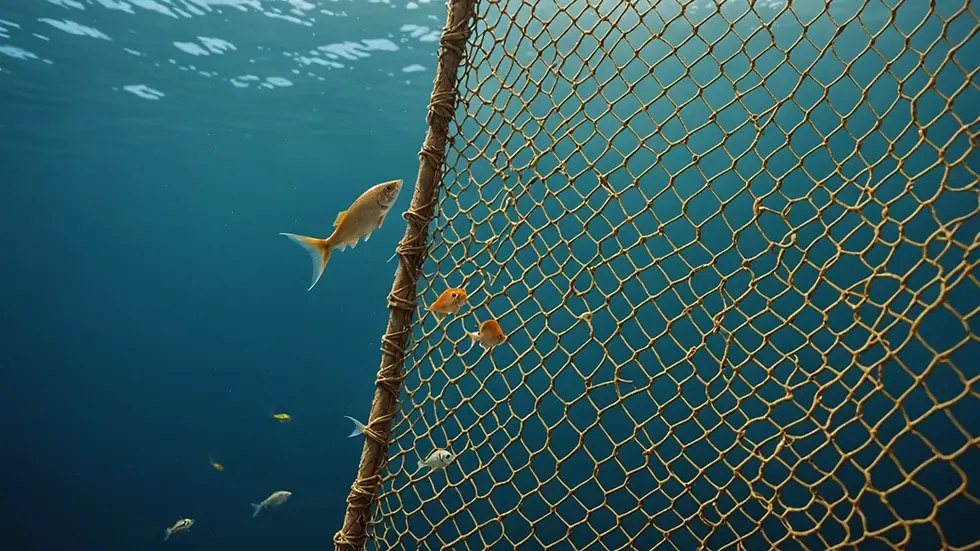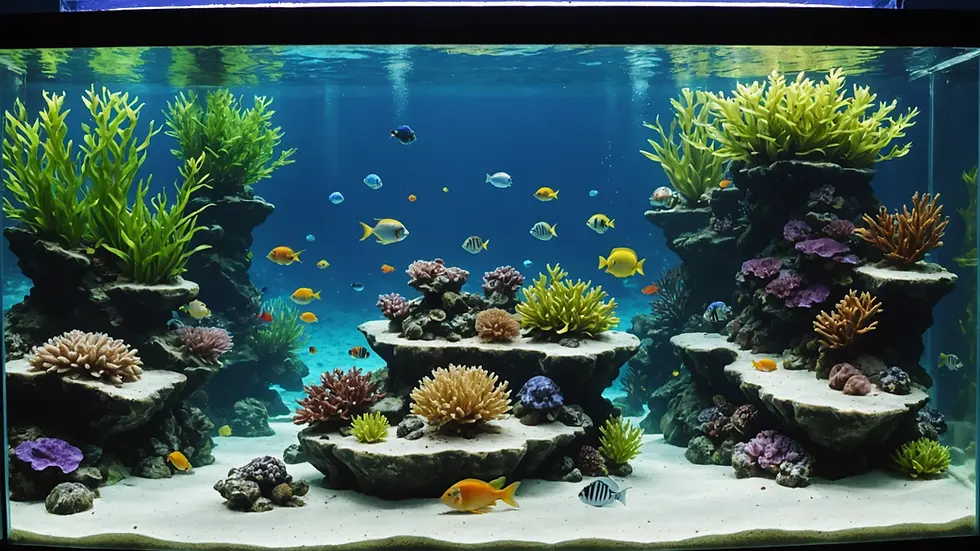How to Successfully Acclimate a New Fish to Your Aquarium: A Beginner's Guide
- Jyotiraj Borah
- Feb 5
- 4 min read
Bringing a new fish home is exciting, but it can also be stressful for the fish and the owner. Acclimating your new aquatic friend properly is essential for ensuring it thrives in your aquarium. Whether you are just starting or have been at it for years, knowing how to acclimate a fish can make all the difference. This guide will walk you through the necessary steps to introduce new fish to your aquarium smoothly.
Understanding the Importance of Proper Acclimation
Acclimation is essential because switching environments can be overwhelming for a fish. For instance, if you add a new fish to a tank with a pH level that differs by even 1 or 2 units from what it is used to, it can lead to stress, illness, or unfortunately, death. Statistics show that well-acclimated fish have a 50% higher survival rate within their first week than those that are not properly introduced. This process is crucial for minimizing stress and ensuring your fish adapt successfully.
Signs of Stress in Fish
Before you begin acclimating your new addition, be aware of these common stress signs:
Rapid gill movement: This can indicate panic or lack of oxygen.
Hiding excessively: While some species like to hide, constant hiding after adding to a new tank can mean they're stressed.
Loss of appetite: Fish under stress may refuse food.
Discoloration: If your fish changes color, it might be signaling distress.
Scratching against objects: This behavior can indicate irritation or parasites.
Recognizing these signs early allows you to take action to protect your fish.
Preparing Your Aquarium for New Fish
Ensuring your aquarium is ready for a new addition is crucial for a successful introduction. Here are key areas to focus on:
1. Tank Size and Compatibility
Determine if your tank can comfortably support the new fish. For example, a single Betta fish requires a minimum of 5 gallons, while a goldfish needs at least 20 gallons. This prevents overcrowding and maintains water quality. Additionally, research species compatibility. For instance, keeping peaceful species like tetras with aggressive ones like cichlids can lead to conflict.
2. Water Quality Testing
It's essential to test your water before introducing new fish. Check pH, ammonia, nitrite, and nitrate levels. Ideal readings for many freshwater fish are as follows:
pH: 6.8 - 7.8
Ammonia: 0 ppm
Nitrite: 0 ppm
Nitrate: < 20 ppm
Using an aquarium test kit can help monitor these parameters accurately.
3. Temperature Regulation
Fish rely on their surrounding temperature. Make sure your aquarium water matches the temperature of the fish's transport bag, ideally within 1-2 degrees Fahrenheit. For tropical fish, this typically means maintaining a temperature of 75-80°F. A reliable heater and thermometer are crucial tools for your setup.

The Acclimation Process
Once your tank is prepared, follow these steps for acclimation:
1. Float the Bag
After purchasing your fish, leave it in the sealed bag and float it on the surface of your aquarium for about 15-20 minutes. This helps the fish gradually adjust to the water temperature in your tank.
2. Introduce Water Gradually
Next, open the bag and add a cup of tank water to it. Wait for another 10-15 minutes before adding another cup. Repeat this several times over the course of an hour. This slow process helps your new fish adapt to varying water conditions.
3. Use a Net for Release
When you’re ready to introduce the fish to the tank, gently use a net to transfer it while discarding the water from the bag. This prevents unwanted contaminants from entering your aquarium.

Post-Acclimation Care
After your new fish is in their new home, take these steps to ensure they settle in well:
1. Monitor for Signs of Stress
The first few days are critical. Watch for stress signs and observe how your new fish interacts with its environment. If there’s any unusual behavior, you need to address these issues promptly to safeguard their health.
2. Avoid Overfeeding
New fish often don’t eat right away. Resist the urge to overfeed. Doing so can pollute the water. Wait one to two days before offering food, and start with a small amount to see if they will eat.
3. Maintain Stable Conditions
Regularly check water parameters and conduct partial water changes as necessary. Regular maintenance helps in keeping a safe and healthy environment for your fish, especially the newcomers.
Common Mistakes in Fish Acclimation
Even seasoned aquarists can slip up during acclimation. Here are pitfalls to avoid:
1. Rush the Process
Taking your time during acclimation is critical. Hurrying can lead to significant stress for the fish. Make sure to follow each step carefully to ensure a smooth transition.
2. Not Researching Compatibility
Mixing incompatible species can escalate into aggression and fatalities within your tank. Always check compatibility first. For example, it is wise not to house fin-nippers like tiger barbs with delicate fish like guppies.
3. Ignoring Water Quality Checks
New fish will add bio-loads to your tank, which can impact water quality. Conduct regular checks of water conditions before and after adding new fish to maintain a stable environment.

Final Thoughts on Acclimating New Fish
Properly introducing a new fish to your aquarium is both an art and a science. By preparing your tank, understanding the acclimation steps, and continuously monitoring your new arrivals, you significantly improve their chances of a healthy and joyful life. Every fish has its own needs, so remain observant and prepared to adjust your care as necessary. Your dedication will ensure that your aquarium remains a vibrant and peaceful home for all its inhabitants.




Comentários